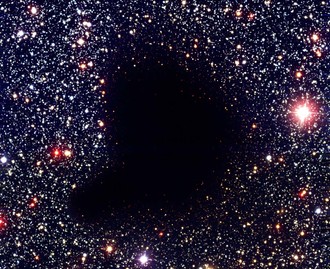
The heating and chemistry of photo-dissociation regions (PDRs) are governed by the remaining far-ultraviolet FUV (6 eV < hn < 13.6 eV) radiation of nearby massive stars. PDRs are responsible for most of the non-stellar infrared (IR) continuum radiation and the millimeter and submillimeter line emission from the resolved molecular clouds in nearby galaxies or from the whole distant galaxies. Comparing the results of theoretical and numerical calculations to the observed spectral line emission of PDRs allows determination of their physical (gas temperature and density) and chemical (contents and abundance of molecules) conditions.
With aim to achieve a consistent dust-related physics in the KOSMA-tau PDR code M. Röllig, R. Szczerba of the Copernicus Center in Toruń, V. Ossenkopf i C. Glück have revised the treatment of interstellar dust in the code. The detailed knowledge of the dust properties is used then to compute dust IR emission, molecular hydrogen formation and the line emission of chemical species. In a paper "Full SED fitting with the KOSMA-τ PDR code - I. Dust modelling" authors demonstrate how the different optical properties, temperatures, and heating and cooling capabilities of the grains influence the physical and chemical structure of a model cloud. The most influential modification is the treatment of molecular hydrogen formation on grain surfaces that allows for chemisorption. This increases the total H2 formation significantly and the connected H2 formation heating provides a profound heating contribution in the outer layers of the model clumps. The contribution of polycyclic aromatic hydrocarbons (PAH) surfaces to the photoelectric heating and H2 formation provides a boost to the temperature of outer cloud layers, which is clearly traced by high-J CO lines. Increasing the fraction of small grains in the dust size distribution results in hotter gas in the outer cloud layers caused by more efficient heating and cooler cloud centers, which is in turn caused by the more efficient FUV extinction.
In the picture: Molecular Cloud Barnard 68. Image Credit: FORS Team, 8.2-meter VLT Antu, ESO.






